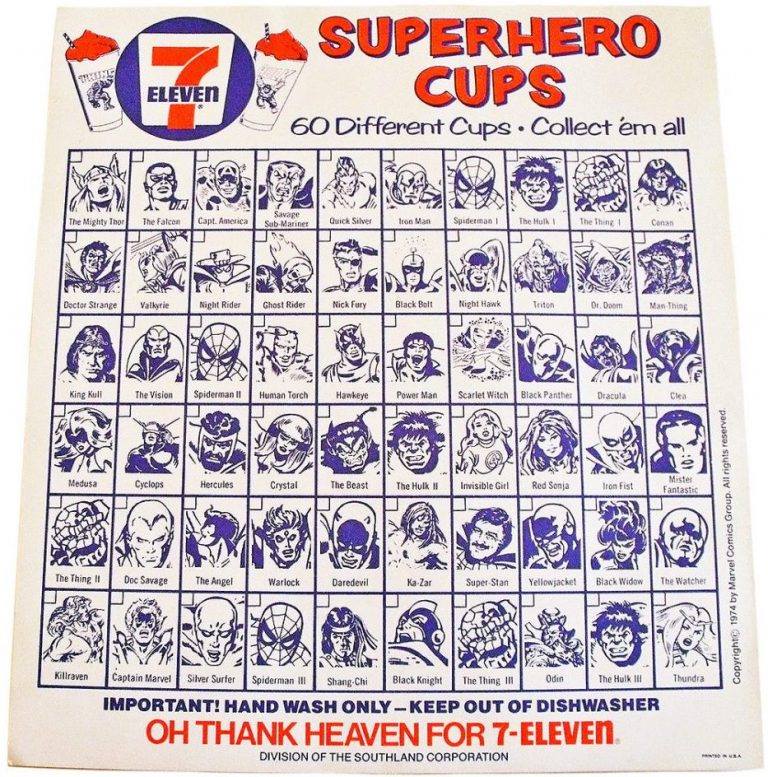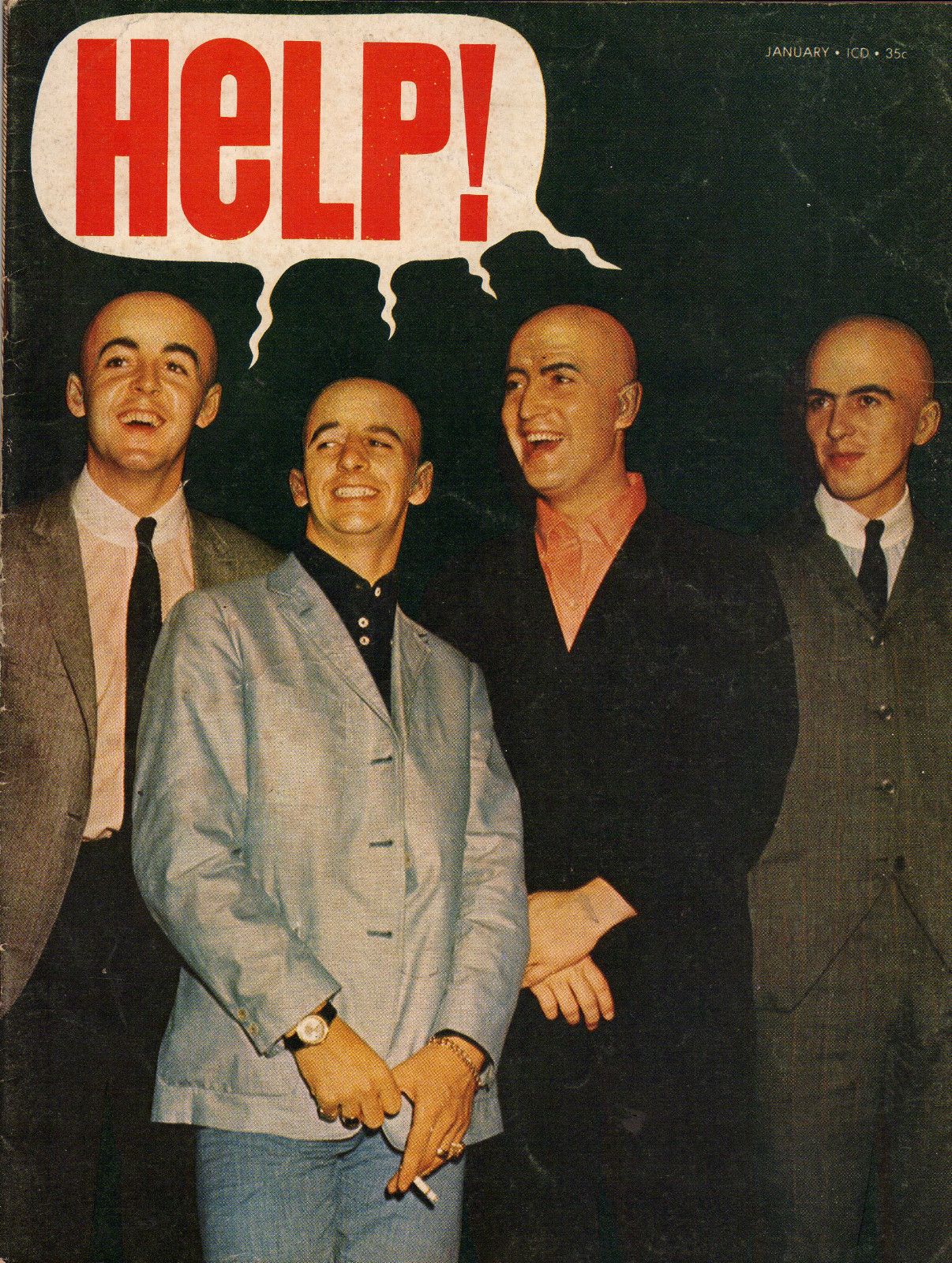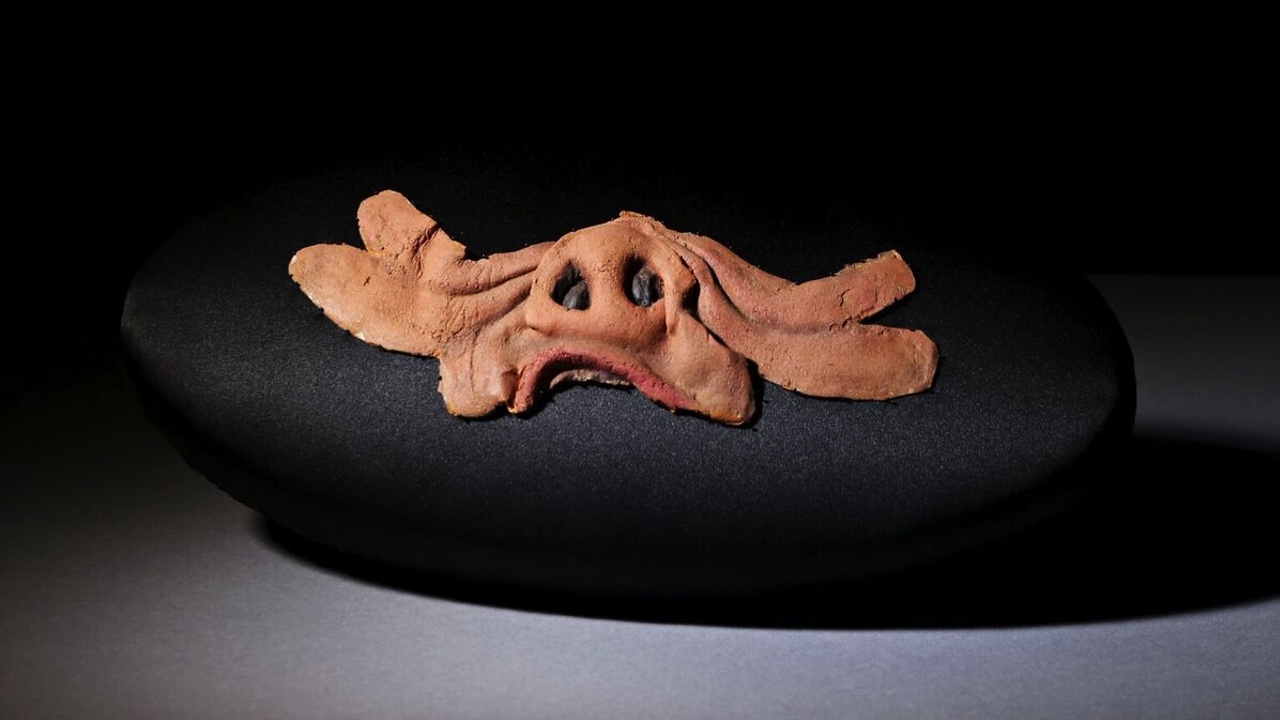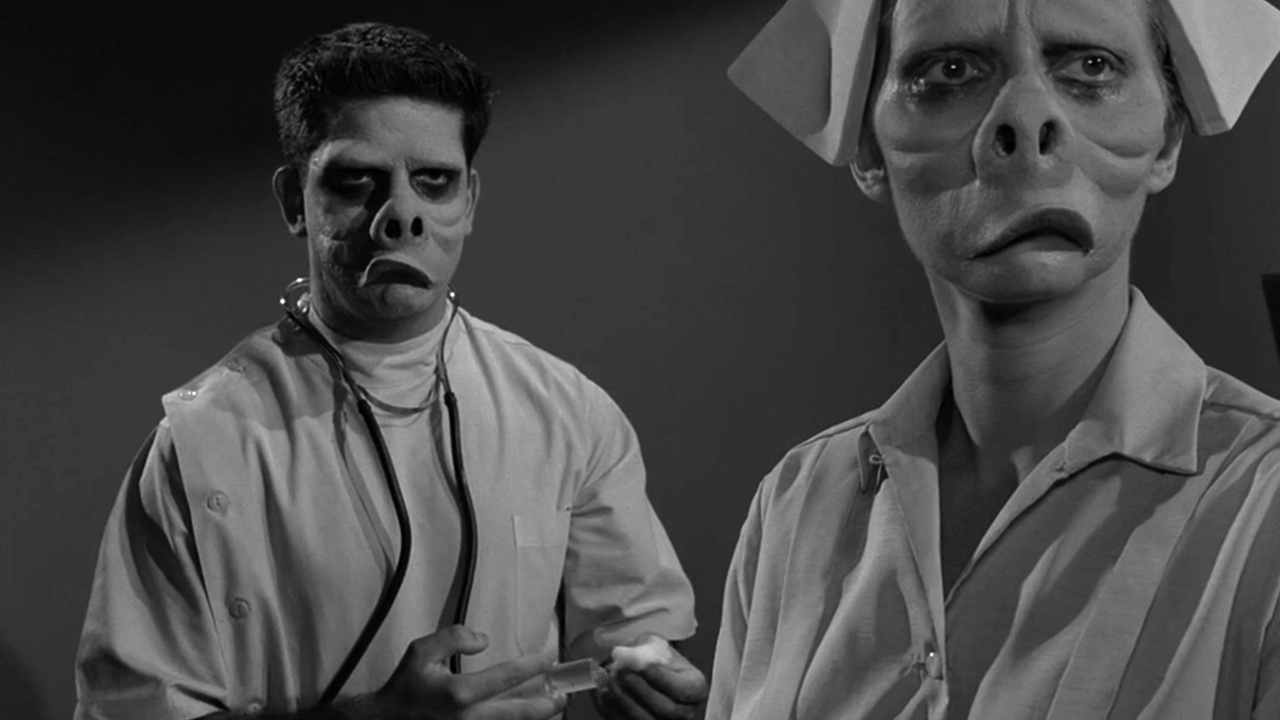Where’s the Kickstarter campaign?!
Marvel Comics 7-Eleven Slurpee Plastic Cup Set

Originally posted to Facebook, but I’m deleting all my shit over there and wanted to hang on to these. Marvel Slurpee cups, one more pop culture item that makes me nostalgic for the Seventies.
Four sets of these plastic cups were produced — three for Marvel Comics characters and one set for DC Comics characters. This is the first of the three Marvel sets issued. Marvel’s more popular characters — Spider-Man, The Incredible Hulk and The Thing — each received three cups.
Nerdgasm!
Big pop culture news today with the new Avengers trailer.
It Never Ends, This Shit
I will never not laugh at this.
Holiday Traditions
https://youtu.be/xJAxRVeKnTE
For what it’s worth, all of Jim Gaffigan’s albums are on Spotify. Recently, I listened to a couple while I was working. Big mistake. This clip is from 2009’s Beyond the Pale.
Help! Magazine

Holy shit, more pop culture dots connected. Before I forget, a few full issues of Help! are available online.
Help! is an American satire magazine that was published by James Warren from 1960 to 1965. It was Harvey Kurtzman’s longest-running magazine project after leaving Mad and EC Publications, and during its five years of operation it was chronically underfunded, yet innovative.
In starting Help!, Kurtzman brought along several artists from his Mad collaborations, including Will Elder, Jack Davis, John Severin and Al Jaffee.
Kurtzman’s assistants included Charles Alverson, Terry Gilliam and Gloria Steinem; the latter was helpful in gathering the celebrity comedians who appeared on the covers and the fumetti strips the magazine ran along with more traditional comics and text pieces. Among the then little-known performers in the fumetti were John Cleese, Woody Allen and Milt Kamen; better-known performers such as Orson Bean were also known to participate. Some of the fumetti were scripted by Bernard Shir-Cliff.
At Help!, Gilliam met Cleese for the first time, resulting in their collaboration years later on Monty Python’s Flying Circus. Cleese appeared in a Gilliam fumetto written by David Crossley, “Christopher’s Punctured Romance”. The tale concerns a man who is shocked to learn that his daughter’s new “Barbee” doll has “titties”; however, he falls in love with the doll and has an affair. Gilliam appeared on two covers of Help! and along with the rest of the creative team, appeared in crowd scenes in several fumetti.
The magazine introduced young talents who went on to influential careers in underground comix as well as the mainstream: among them Robert Crumb, Gilbert Shelton and Jay Lynch. Algis Budrys and other science fiction writers were regular contributors of prose and scripts to the magazine.
A total of 26 issues were printed before the magazine folded in 1965. Volume one (Aug. 1960–Sept. 1961) had 12 issues, and 14 issues comprised the second volume (Feb. 1962–Sept. 1965).
The Next Bollywood Blockbuster
This looks amazing …
Bob 2 Throbblehead

We must repeat!
Bob Casale, one of the 5 essential gears in the original Devo Fab 5, gets honored posthumously with this hand-numbered, limited edition, 7″ sculpted figure of 1,000 units. Bob is outfitted for devolved action with his “Duty Now for the Future” era helmet and protective pads circa 1979 and his classic Devo Tee and 3-D glasses.
This year marks legendary Devo’s 40th anniversary release of their iconic debut record, “Are We Not Men?, We Are Devo!” Commemorate Bob 2 (and his famous facial mole) by stepping up and becoming one of the few Throbblehead owning members of the Devolutionary Army.
Get yourn here.
UPDATE: Q: Are We Not Men? A: We Are Devo! came out 40 years ago. In its honor, 99% Invisible‘s Sean Cole investigates the creation of that iconic cover, interviewing all involved – INCLUDING CHI-CHI RODRIGUEZ.
Original “Eye of the Beholder” Prosthetic Up For Auction

Lot 208 of 401, with a starting bid of $5,000.00. It’s expected to go for as much as $15,000.00!
From the auction site …
A male nurse ‘Pig Face’ makeup appliance from Rod Serling’s essential anthology series The Twilight Zone. This foam latex makeup appliance is painted in a light flesh tone with pink lips and large nostrils, and has been professionally conserved by LACMA object conservator Irena Calinescu and pin-mounted to an oval museum board. The appliance was made by prolific Hollywood makeup artist William Tuttle, who previously worked on H.G. Welles’ The Time Machine. It was acquired from science fiction writer and memorabilia collector Forrest J. Ackerman. This appliance has been meticulously cared for and stored in a light, climate and humidity controlled fine art warehouse. As a result, though the appliance is delicate and the foam is now brittle with age, the shape, color and appearance remain intact, and it is in good vintage condition overall.
In the episode ‘The Eye of the Beholder’ (206), the appliance is worn during the trademark twist ending, when the medical staff is repulsed by their patient’s ‘horrific’ beautiful appearance, one of the seminal moments in television history.

There’s actually TONS of cool shit in this auction. Check it out here.
